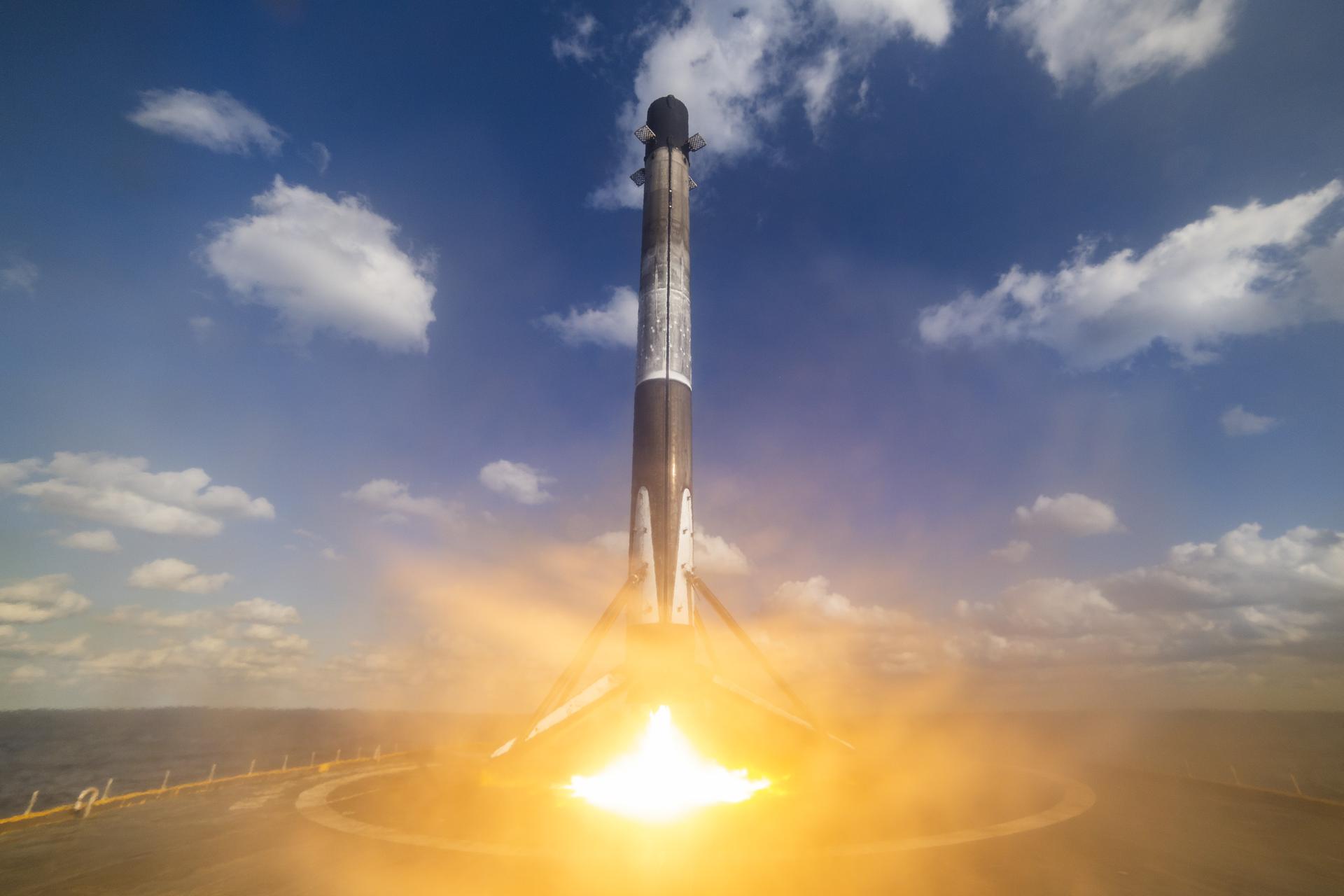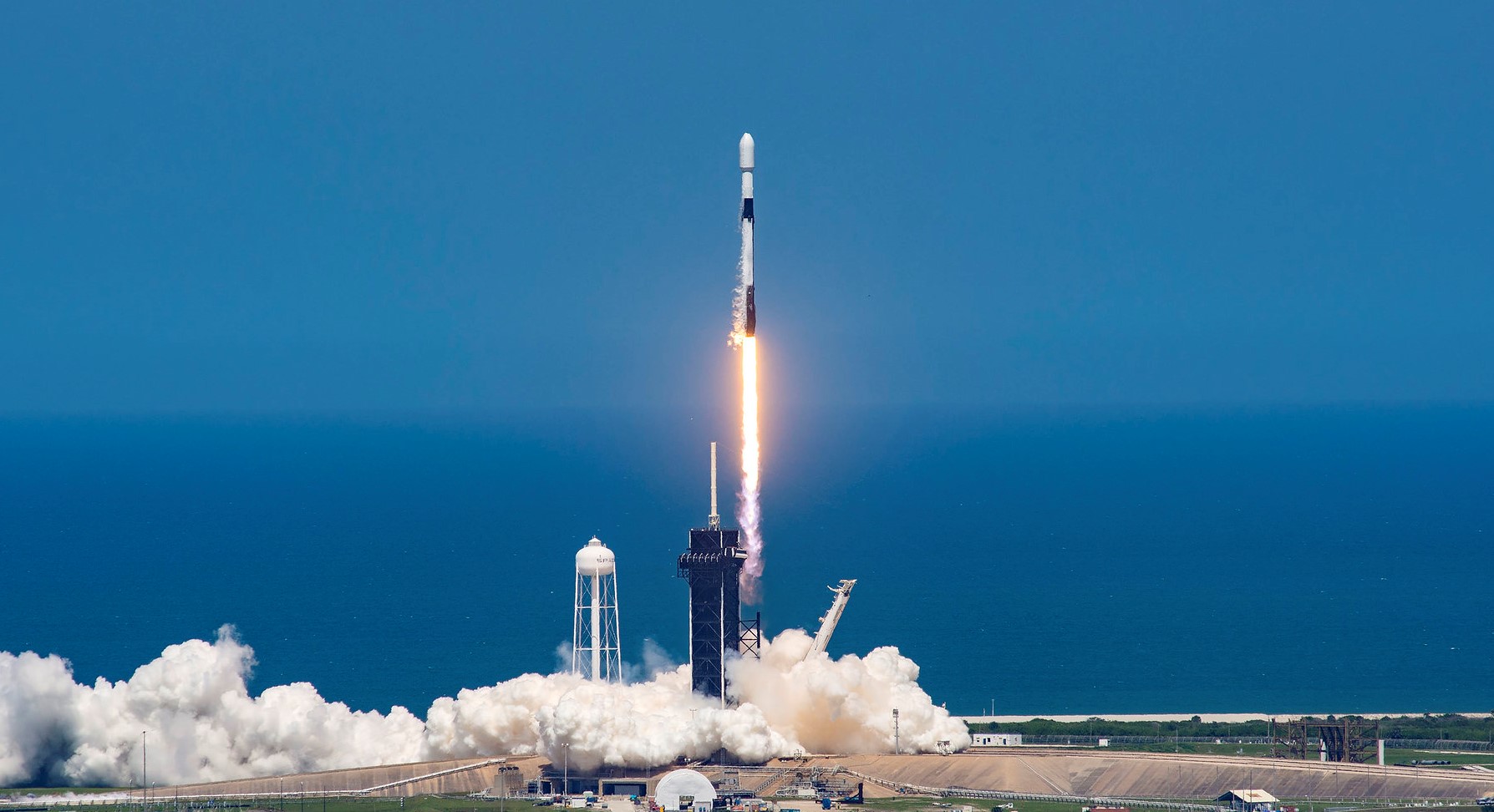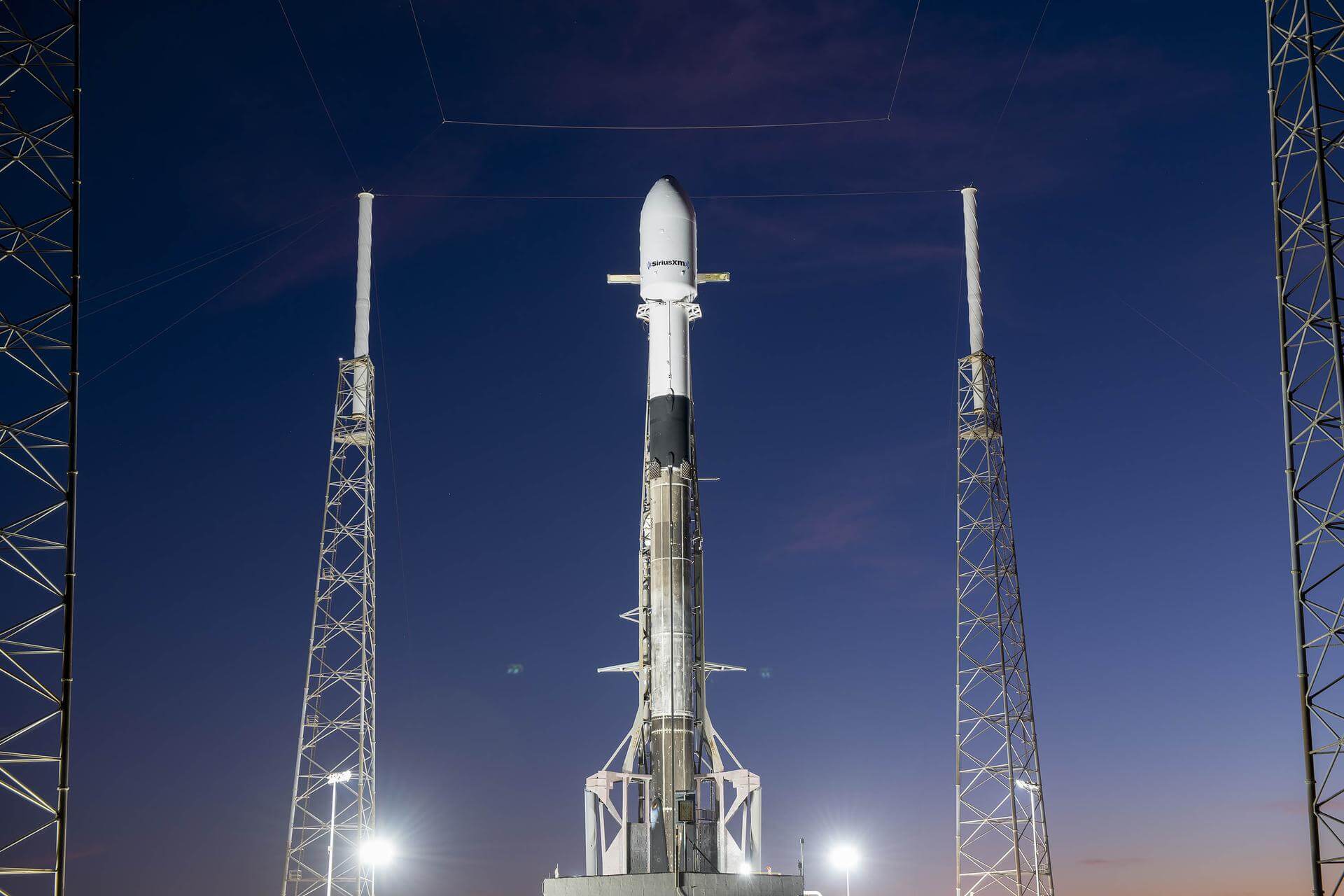
Falcon 9 - B1051
Details
Status - Expended
Stage Expended
Falcon 9 Block 5 | Galaxy 31 & 32
SpaceX | United States of AmericaCape Canaveral SFS, FL, USA
Nov. 12, 2022, 4:06 p.m.
Falcon 9 Block 5 | Starlink Group 4-22
SpaceX | United States of AmericaCape Canaveral SFS, FL, USA
July 17, 2022, 2:20 p.m.
Falcon 9 Block 5 | Starlink Group 4-12
SpaceX | United States of AmericaCape Canaveral SFS, FL, USA
March 19, 2022, 4:42 a.m.
Falcon 9 Block 5 | Starlink Group 4-4
SpaceX | United States of AmericaVandenberg SFB, CA, USA
Dec. 18, 2021, 12:41 p.m.
Falcon 9 Block 5 | Starlink 27
SpaceX | United States of AmericaCape Canaveral SFS, FL, USA
May 9, 2021, 6:42 a.m.
Falcon 9 Block 5 | Starlink 21
SpaceX | United States of AmericaKennedy Space Center, FL, USA
March 14, 2021, 10:01 a.m.
Falcon 9 Block 5 | Starlink 16
SpaceX | United States of AmericaKennedy Space Center, FL, USA
Jan. 20, 2021, 1:02 p.m.
Falcon 9 Block 5 | Sirius SXM-7
SpaceX | United States of AmericaCape Canaveral SFS, FL, USA
Dec. 13, 2020, 5:30 p.m.
Status: Launch Successful
Mission:
SXM-7 is a large high power broadcasting satellite for SiriusXM's digital audio radio service (DARS). Space Systems/Loral (SS/L) got in July 2016 the contract to build the two satellites based on their SSL-1300 bus - SXM-7 and SXM-8. Both operate in the S-band spectrum. Each satellite will generate more than 20-kW of power and will have a large unfurlable antenna reflector, which enables broadcast to radios without the need for large dish-type antennas on the ground. SXM-7 is meant to replace the XM-3 satellite.
Geostationary Transfer Orbit B1051 - Flight Proven ( ) Just Read the InstructionsFalcon 9 Block 5 | Starlink 13
SpaceX | United States of AmericaKennedy Space Center, FL, USA
Oct. 18, 2020, 12:25 p.m.
Falcon 9 Block 5 | Starlink 9
SpaceX | United States of AmericaKennedy Space Center, FL, USA
Aug. 7, 2020, 5:12 a.m.
Status: Launch Successful
Mission:
A batch of 57 satellites for Starlink mega-constellation - SpaceX's project for space-based Internet communication system. This launch will also carry two BlackSky Earth-imaging satellites as a rideshare.
Low Earth Orbit B1051 - Flight Proven ( ) Of Course I Still Love YouFalcon 9 Block 5 | Starlink 6
SpaceX | United States of AmericaKennedy Space Center, FL, USA
April 22, 2020, 7:30 p.m.
Falcon 9 Block 5 | Starlink 3
SpaceX | United States of AmericaCape Canaveral SFS, FL, USA
Jan. 29, 2020, 2:06 p.m.
Status: Launch Successful
Mission:
Second operational Starlink payload of 2020 and third overall. The Falcon 9 launch vehicle will carry a batch of 60 Starlink satellites that will be insterted in a Low Earth Orbit (LEO) at an altitude of 290 km (180 mi) and an inclination of 53°. They will then split into three orbital planes and raise their orbits to reach an operational altitude of 550 km (342 mi). The Starlink LEO constellation aims to provide worldwide affordable satellite internet access. 182 satellites (120 operational) have been deployed so far, the goal scheduled for the mid-2020s being 12,000 satellites in orbit, with a possible later extension to 42,000. The booster for this launch will be B1051, a Block 5 generation core which previously flew on SpaceX's Demonstration Mission 1 (first Crew Dragon test flight) and launched the Canadian Space Agency's RADARSAT Constellation.
Low Earth Orbit B1051 - Flight Proven ( ) Of Course I Still Love YouFalcon 9 Block 5 | RADARSAT Constellation
SpaceX | United States of AmericaVandenberg SFB, CA, USA
June 12, 2019, 2:17 p.m.
Status: Launch Successful
Mission:
The Radarsat Constellation Mission is a follow-on project to RADARSAT-2 currently developed by MDA. The constellation will consist of a fleet of three spacecraft, and be both complementary and a follow-on to the upcoming deployment of the RADARSAT-2 mission. The primary purpose of the RCM is to provide C-Band data continuity for RADARSAT-2 users, as well as adding a new series of applications enabled through the constellation approach. The main uses of RCM are expected to be in the areas of: maritime surveillance (ship detection, ice monitoring, and oil spill detection), disaster management, ecosystem monitoring. The primary areas of interest are the landmass of Canada and its surrounding Arctic, Pacific and Atlantic maritime areas. The images and derived information are required to be provided to Canadian government users at frequent area coverage rates. Contrary to the earlier RadarSat missions, the imagery will not be available commercially. The spacecraft Payload will consist of a Synthetic Aperture Radar (SAR) sensor integrated with an Automated Identification System (AIS). The SAR Payload concept is a 2-panel deployable SAR antenna of length approximately 7 meters.
Sun-Synchronous Orbit B1051 - Flight Proven ( ) Landing Zone 4Falcon 9 Block 5 | SpX-DM1 (Demonstration Mission 1)
SpaceX | United States of AmericaKennedy Space Center, FL, USA
March 2, 2019, 7:49 a.m.
Falcon 9
CSG-3
Space Launch Complex 4E - Vandenberg SFB, CA, USACSG-3 is an Earth observation satellite for the Italian Space Agency, part of a reconnaissance constellation using synthetic aperture radars operatin…
Long March 7A
Shijian 29 A-B
201 - Wenchang Space Launch Site, People's Republic of China2 satellites officially described as for "demonstration of new technologies for spatial targets detection" purposes.
Long March 4B
Tianhui 7
Launch Area 94 (SLS-2 / 603) - Jiuquan Satellite Launch Center, People's Republic of ChinaA satellite officially described as for cartography purposes, details TBD.
Soyuz 2.1b/Fregat-M
AIST-2T 01 & 02
Cosmodrome Site 1S - Vostochny Cosmodrome, Siberia, Russian FederationA pair of Russian optical Earth observation satellites built by the Progress Rocket Space Centre for obtaining stereo images of the Earth's surface, …
Long March 3B/E
Fengyun-4C
Launch Complex 2 (LC-2) - Xichang Satellite Launch Center, People's Republic of ChinaChina's geostationary meteorological satellite program FY-4 (Feng Yun 4) is the second generation of chinese geostationary meteorological satellites.




